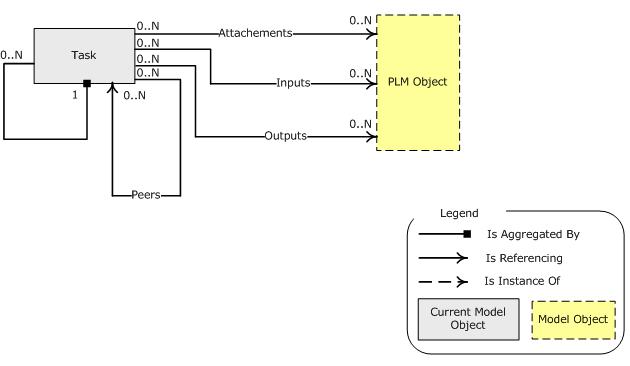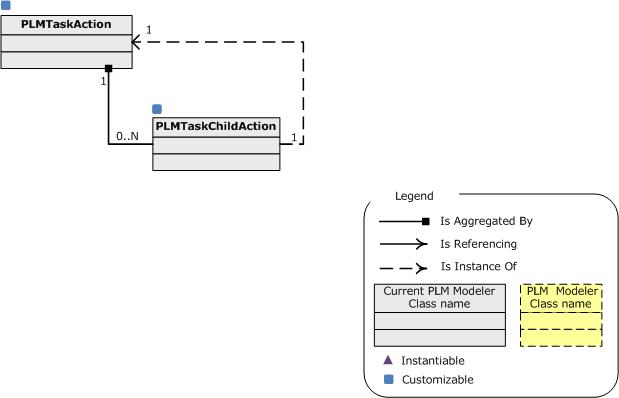
Task Modeler Description & Customization |
| Technical Article |
|
This article presents the Task modeler, and explains how to customize it. |
This section first presents the objects representing the Task modeler. Then it describes how this object model view has been translated towards PLM objects based on PLM Core Modeler objects. You will see the description of each PLM package defining these PLM objects.
Task modeler provide task capabilities within CATIA V6 environment with ability to reference PLM objects.
This is summarized in the following UML schema:
 |
Only object of this modeler is the task object. A task can be break down into sub-task (also called child task). All PLM object needed to perform a task are referenced by it. Several kind of referencing are available:
The Task model is implemented with PLM Core Object as follows:
 |
The following array shows the links between the conceptual and PLM Core objects:
| Model Object | PLM Modeler Type | PLM Core Type | Modeler PLM Package |
|---|---|---|---|
| Task | PLMTaskAction | PLMCoreReference | PLM Task for CATIA V6 |
| Sub-task | PLMTaskChildAction | PLMCoreInstance | PLM Task for CATIA V6 |
| PLMTaskAction | PLMCoreReference | PLM Task for CATIA V6 |
This section lists and describes the PLM Opening ID implemented by the following PLM classes of the Task modeler.
PLMTaskAction, Implemented Business Logic
| PLM Opening ID | Script Contents |
|---|---|
| PLMAttributesValuationCheck | BL to perform validity checks on attributes' values |
| PLMIdentificationInitialization | BL used for PLM New to pre-valuate the Identifier of the object |
Customization first deals with the modeler PLM package customization [2]. It consists in to create a new package containing new PLM classes for each "Customizable" PLM class of the modeler PLM package. Then, you should take into account the UI masks creation to create either a new security mask file, or to update the default one [3]. Finally, you can integrate your own business logic on each new PLM classes by implementing provided PLM opening ID [4].
This part consist in to create a new package when the modeler PLM package must be customized.
Package PLM Task for CATIA V6 must be fully customized.
| PLM Class Name | To Be Customized | Remarks |
|---|---|---|
| PLM Task for CATIA V6 | Yes | Do not insert the PLM_ExternalID attribute in the identifier set since it will be automatically added. Do not support multi-valuated attributes |
| PLM Child Task for CATIA V6 | Yes | Do not support any additional attributes |
When a PLM attribute is defined (inside modeler PLM package) some features like its editability criteria, mandatory /optonal option, can be overwriten by UI mask. You can say this PLM attribute is not writable in Query context, this PLM attribute is mandatory in Create context, this user PLM attribute is not never visible and so one. A set of UI masks form a security mask file. We say security mask because it is associated with these files security information. For a people, and a given context can be associated a security mask.
For each customized Modeler PLM package, at least one UI mask file must be created (for the default security mask ), since it must contain the new PLM Attributes. When you use the tool to create a customization, a default UI mask file is provided taken into account the added PLM attributes. You can modify the default file to introduce your change .>
If you want create a new security mask file, you should provide a UI mask for all the "AsIs" modeler PLM packages and for each customization of the "Customizable" modeler PLM package.
No specific rule to customize UI mask file.
You can yourself integrate your business logic for each customization of:
PLM Opening ID PLMAttributesValuationCheck PLMIdentificationInitialization
| Version: 1 [Oct 2008] | Document created |
| Version: 2 [Oct 2009] | Business Logic added |